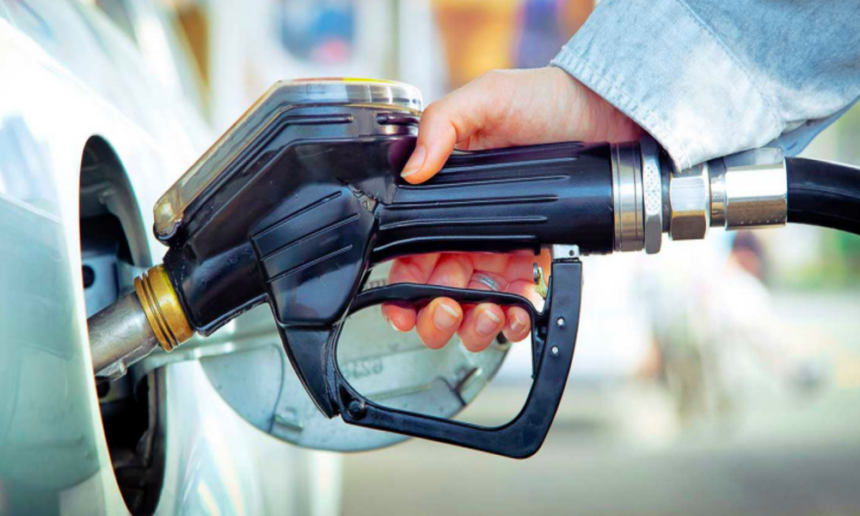An acquaintance of mine brought in a Lexus 570 from Europe. “Every time I put A-92 petrol in, the engine light comes on prompting a health check. Then I get a full diagnostics test and have the relevant part cleaned, but it doesn’t take long before the engine light turns on again. But, when I put so-called Euro petrol, the car runs much more smoothly and consumes less fuel. Unfortunately, there are only a few gas stations that offer the Euro petrol in the city, and you can’t even find A-95 in the countryside.” – he said in a disappointed voice.
When you dig a bit deeper, you will find out that the government does not impose any requirements on imported petrol to ensure its quality and efficiency, and the international emission standard that is currently in effect has not been updated since 1996 (meaning the standard is Euro 2). Only ten per cent of total petrol sold in 2017 was in line with the Euro 5 standard, which means that the remaining 90 per cent was low quality petrol that is more harmful to human health and the environment, let alone that it is outdated by twenty-two years from where other countries are. Most gasoline importers are prioritizing sales over potential impacts on air pollution and public health.
While Mongolians use an octane rating to differentiate types of petrol, the more developed world has already spent 30 years measuring the emission of pollutants after combustion. Our two neighboring countries have started requiring that imported vehicles meet the Euro 5 (China 5) standards when it comes to petrol and diesel fuel.
Mongolia and the world
There is a standard named MNS 5013:2009 for petrol engines (MNS 5014:2009 for diesel engines), which sets out the maximum acceptable level of toxic elements in the components of petrol and states the method of measurement. However, it doesn’t say anything about the most harmful elements to human health – nitric oxide and sulfuric dioxide.
A month ago the Ministry of Road and Transport Development said that there are 913,723 vehicles in Mongolia, 90 per cent (826,970) of which are cars, and 59 per cent of cars are in Ulaanbaatar. Eighty-two per cent of all cars, which is estimated to be 750,292 cars, are more than 10 years old, and 58 per cent have the driving wheel on the right hand side.
The elements emitted by all these vehicles constitute ten per cent of Ulaanbaatar’s air pollution. Cars emit over 260 elements, and the most harmful to human health include nitric oxide, sulfuric dioxide, carbon oxide, benzaphrine carbohydrate, ash, heavy metals (Pb, Ca, Hg,…etc), dioxin, and dust particles. All these toxic elements are measured and have legal limits in developed countries.
Since 1990, the Euro emission standard has set limits on those harmful elements emitted from vehicles, and has been regularly updated. This standard is required to be met in Western countries on the basis that the toxic elements negatively affect human health in many ways, including respiratory diseases, allergies, cardiac diseases, kidney and liver diseases, damage to nervous system, negative effect on reproductive systems, and mental stress.

Research by the University of Leeds suggests that the European Union is saving 80,000 lives a year by adopting the Euro standard. This begs the question: How many people, including children, are losing their lives because most of the fuel used in our country doesn’t meet the standard and the government has failed to demand compliance and do something about it?
Public health in Mongolia is being negatively affected by air pollution and emissions from cars over 10 years old (4 out of 5 five cars). The lifetime of a car is divided into three periods of five years. In the first 5-year period, cars are usually guaranteed by their manufacturer, meet all technical standards, keep emission levels within the initial level, and rarely require repairs. In the second period when cars are 5-10 years old, cars will often be in the hands of a second owner, have irregularities in emission levels, and become prone to malfunctions or breakdowns. Most countries attempt to export these cars and start setting taxes and insurance at higher levels. When the cars transition into the third period, they tend to break down more frequently, have higher emission levels, and experience shortages in car parts. This is when both the owner and the country become desperate to get rid of the car, look for ways to recycle, or send them to less developed countries at a cheap price.
Pulling the chute
Today Mongolia is full of cars in their third period. Given now we have already made the jump, it is time to focus on pulling the chute at the right time. So what should we do?
We have no choice but to stop allowing the imports of cars over 7 years old starting from 2020, impose higher taxes on cars over 5 years old, and impose a special tax on cars that have the driving wheel on the right hand side. In order to mitigate negative impacts on environment and health, it is time to update the current regulations in place and introduce an emission standard. Furthermore, we need to improve traffic oversight, enhance mandatory diagnostics, stop people from driving cars that are too old, or increase taxes.
Experts believe that the diesel fuel imported from Russia cannot be used for engines with the Euro 5+ standard. Also, it doesn’t meet storage requirements. Mongolia’s petrol suppliers and other relevant organizations need to take the helm in executing full implementation of Euro 5 and 6 standards.
Internationally, manufacturers are increasingly making cars that have low emission levels and clean engines, which means the number of car engines that can be used in Mongolia is decreasing. Today Mongolia has become one of only a few countries using diesel fuel that doesn’t meet quality standards. The reduced opportunity to supply Western-made diesel engines will soon start affecting the construction and mining sectors as well as labor productivity. Manufacturers have been supplying vehicles and equipment with engines meeting the Euro 5 standard in recent years. However, the quality of petrol found in Mongolia is negatively impacting engine operations and making people lose value in their asset.
Norway is planning to put in place a complete ban on selling cars with petrol engines starting from 2025. France and Great Britain intend to do the same from 2040. Volvo intends to only make cars with electric engines from 2019, and both Jaguar and Land Rover have said that they will do the same from 2020.
Lately, Mongolian dealers have been demanding that the petrol imported from Russia must meet vehicle emission requirements, and regulations need to be revised. In addition, we need to allow the market to regulate the prices of petrol. For example, high quality diesel fuel costs one euro (~2,500 MNT) per liter in Germany, while Mongolia’s diesel fuel is sold at 2,000 MNT per liter.
Mongolia is fast becoming a dumping ground for Japanese vehicles with engines that use both petrol and electric power. These engines are harmful, and the reason people are not opposing it is that the public is not fully aware of its dire consequences. We are no longer sure how the used up car batteries and engine oil should be disposed of. Do we keep burying them in the ground?
It is time to give incentives for people to buy new cars by reducing the import taxes for newer cars and increasing it for older cars.
These decisions might generate disagreement from the public, but if we stay idle, the overall socio-economic costs will keep increasing.
There is nothing dearer than public health.
2018.06.20
Trans. by B.Amar












